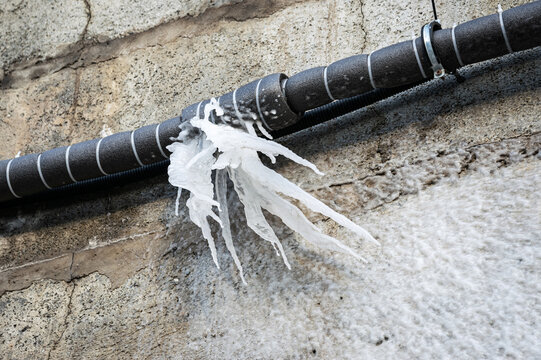Key Methods for Avoiding Frozen Pipes in Cold Weather
Key Methods for Avoiding Frozen Pipes in Cold Weather
Blog Article
Are you looking for answers concerning How to prepare your home plumbing for winter weather?

Winter can wreak havoc on your pipes, specifically by freezing pipes. Below's exactly how to prevent it from taking place and what to do if it does.
Introduction
As temperatures decrease, the risk of icy pipelines increases, possibly bring about costly repair services and water damage. Comprehending just how to stop frozen pipes is critical for property owners in chilly environments.
Prevention Tips
Insulating vulnerable pipes
Wrap pipes in insulation sleeves or make use of heat tape to safeguard them from freezing temperatures. Focus on pipes in unheated or outside locations of the home.
Home heating techniques
Keep interior rooms adequately heated, especially areas with plumbing. Open cabinet doors to allow warm air to distribute around pipelines under sinks.
Exactly how to determine frozen pipelines
Search for decreased water flow from faucets, uncommon odors or noises from pipes, and noticeable frost on revealed pipelines.
Long-Term Solutions
Structural adjustments
Consider rerouting pipelines far from outside walls or unheated areas. Add added insulation to attic rooms, basements, and crawl spaces.
Updating insulation
Invest in premium insulation for pipelines, attics, and walls. Appropriate insulation helps preserve regular temperatures and decreases the danger of frozen pipelines.
Shielding Exterior Pipes
Yard tubes and outside faucets
Disconnect and drain pipes yard pipes before winter. Install frost-proof faucets or cover outside faucets with insulated caps.
Recognizing Frozen Pipes
What triggers pipes to freeze?
Pipelines ice up when subjected to temperatures below 32 ° F (0 ° C) for extended periods. As water inside the pipelines freezes, it broadens, putting pressure on the pipeline walls and potentially creating them to break.
Dangers and damages
Frozen pipes can cause water supply disturbances, residential property damages, and costly fixings. Burst pipes can flooding homes and cause considerable structural damages.
Signs of Frozen Water Lines
Identifying icy pipelines early can prevent them from breaking.
What to Do If Your Pipes Freeze
Immediate activities to take
If you think frozen pipelines, maintain taps available to ease stress as the ice melts. Use a hairdryer or towels soaked in hot water to thaw pipes gradually.
Verdict
Stopping icy pipes needs aggressive procedures and fast responses. By understanding the reasons, indicators, and preventive measures, home owners can protect their plumbing during winter.
5 Ways to Prevent Frozen Pipes
Drain Outdoor Faucets and Disconnect Hoses
First, close the shut-off valve that controls the flow of water in the pipe to your outdoor faucet. Then, head outside to disconnect and drain your hose and open the outdoor faucet to allow the water to completely drain out of the line. Turn off the faucet when done. Finally, head back to the shut-off valve and drain the remaining water inside the pipe into a bucket or container. Additionally, if you have a home irrigation system, you should consider hiring an expert to clear the system of water each year.
Insulate Pipes
One of the best and most cost-effective methods for preventing frozen water pipes is to wrap your pipes with insulation. This is especially important for areas in your home that aren’t exposed to heat, such as an attic. We suggest using foam sleeves, which can typically be found at your local hardware store.
Keep Heat Running at 65
Your pipes are located inside your walls, and the temperature there is much colder than the rest of the house. To prevent your pipes from freezing, The Insurance Information Institute suggests that you keep your home heated to at least 65 degrees, even when traveling. You may want to invest in smart devices that can keep an eye on the temperature in your home while you’re away.
Leave Water Dripping
Moving water — even a small trickle — can prevent ice from forming inside your pipes. When freezing temps are imminent, start a drip of water from all faucets that serve exposed pipes. Leaving a few faucets running will also help relieve pressure inside the pipes and help prevent a rupture if the water inside freezes.
Open Cupboard Doors
Warm your kitchen and bathroom pipes by opening cupboards and vanities. You should also leave your interior doors ajar to help warm air circulate evenly throughout your home.

As an avid person who reads on How To Avoid Freezing Pipes, I assumed sharing that piece of content was a smart idea. Sharing is caring. You just don't know, you may be helping someone out. I praise you for your time. Return soon.
Browse Website Report this page